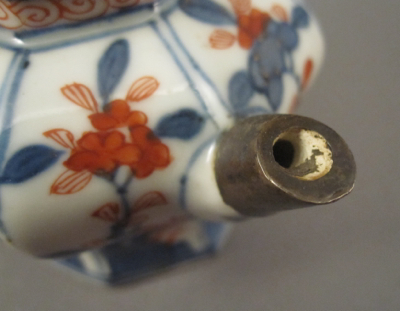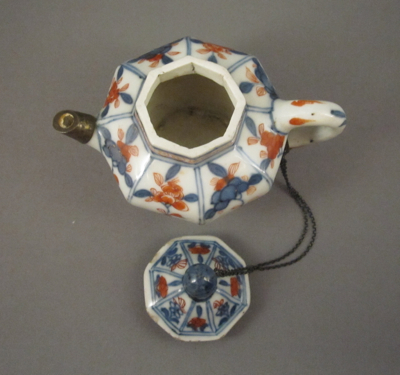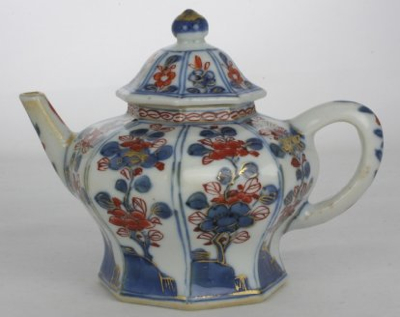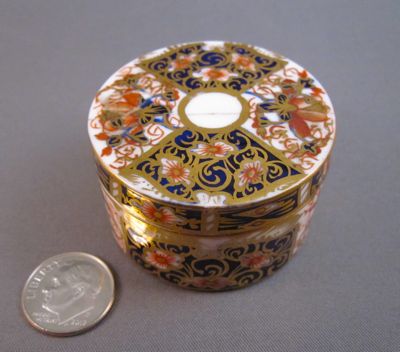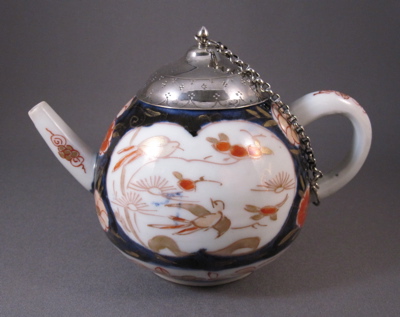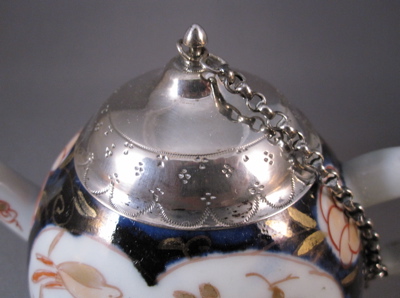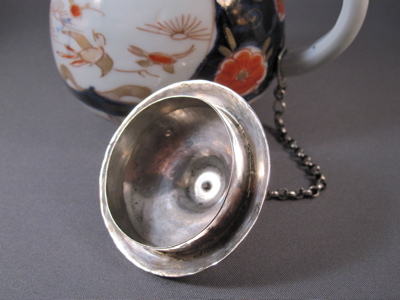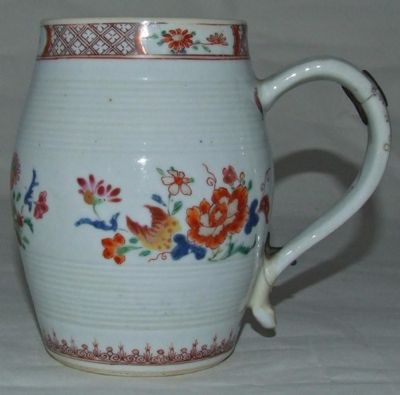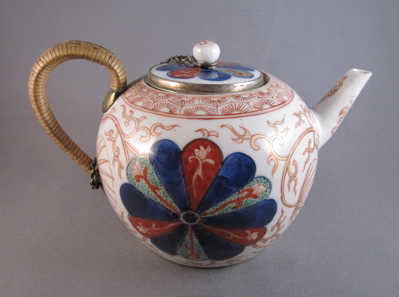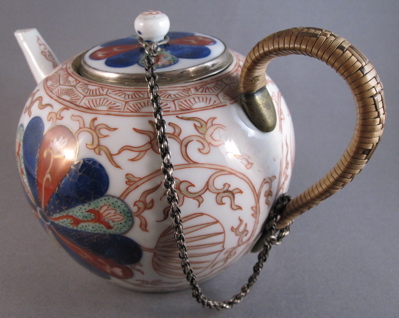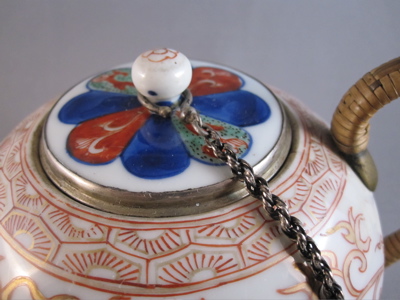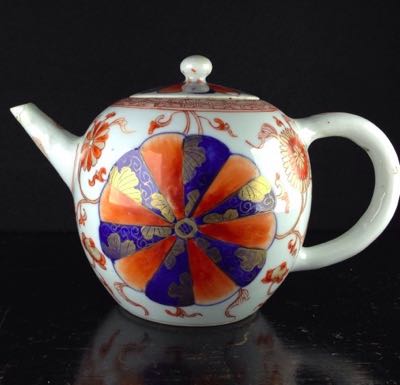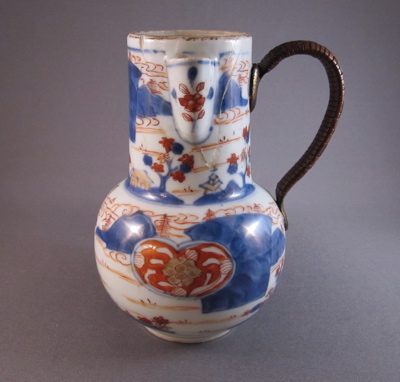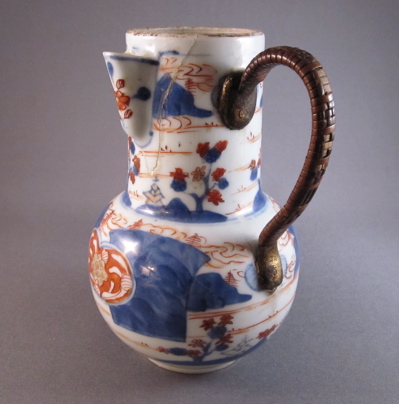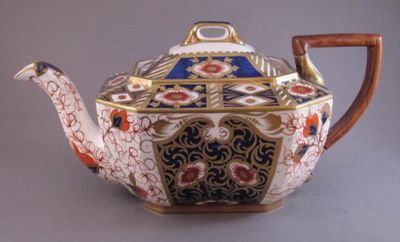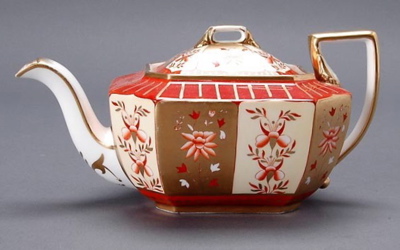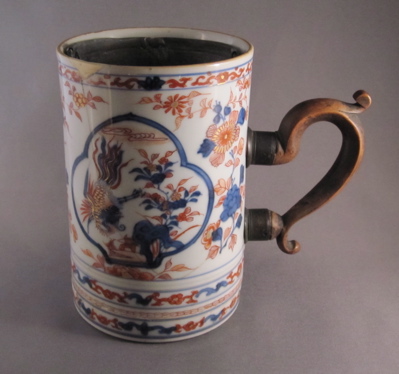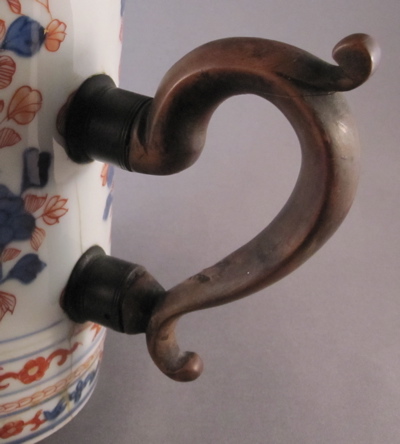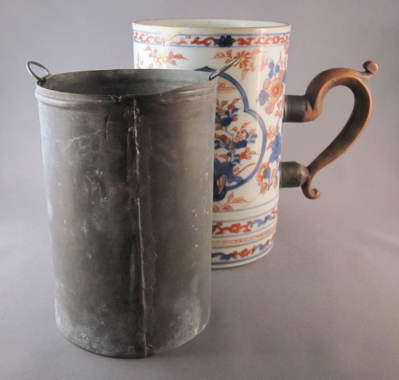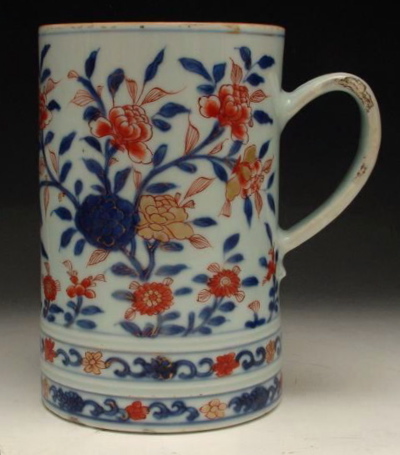Though this octagonal-shaped Chinese porcelain teapot from the Kangxi period (1662-1722) appears to be a miniature, it is indeed a functioning vessel. Tea was only for the wealthy in the late 17th century; brewed in highly concentrated batches in tiny teapots and consumed in small amounts. This fine example, which stands nearly 4″ high, has cobalt blue underglaze decoration with iron red and gilt detailing. The remains of the original porcelain spout have been replaced by a much smaller silver cap, most likely in Amsterdam in the 1800s. As a precaution against loss, the lid has been shackled to the handle using a fine-link chain. This embellishment may have been added at the same time as the replacement spout.
This nearly identical teapot with the same form, size and decoration as mine shows what the original spout looked like before the addition of the silver replacement.
Photo courtesy of Pater Gratia Oriental Art





